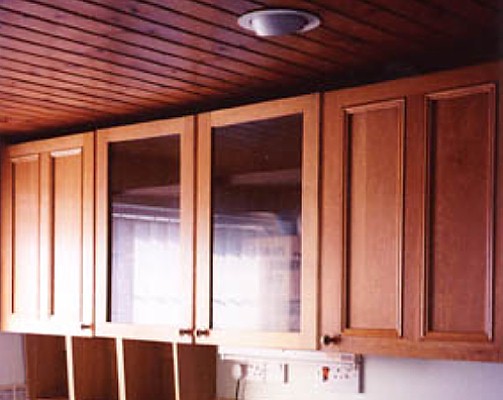Our panels have a range of applications – kitchen ceilings being one of the most popular areas where they are used.
Kitchens are an area where problems can occur with the ceiling. Flooring and walls always get coverings that are ideally suited to their environment. Kitchen ceilings, however, frequently get overlooked with painted plaster or texturing compound being used. These are adversely affected by the large amount of moisture that gets generated in the kitchen. Painted surfaces can require maintenance in the long run if they start to peel or turn mouldy.
Luckily The Bathroom Marquee has a wide range of maintenance-free ceiling panels that can transform your kitchen ceiling.
The knots in the wood had not been sealed properly. This resulted in the natural oils in the wood affecting the varnish coating and dripping through onto the kitchen units below.
So the ceiling was replaced with a white PVC panel system. This offered a tongue and groove effect just like the timber version but was made from maintenance free PVC. The bright white colour was a complete contrast to the darker wood that had been there before making the whole room feel lighter and more open. The reflective qualities of this system is an often overlooked benefit of ceiling panels.
This case study is typical of the problems that can occur with traditional ceiling products, problems that are eradicated if you install our PVC panels on your kitchen ceiling.
Panelling is perfect for use in other rooms around the home. Bathroom and kitchens are the obvious area that benefit from their waterproof properties but their maintenance-free qualities will be appreciated when they used on living room ceilings as well.
Installing The Panels On The Kitchen Ceiling
Rather than ripping off the existing timber cladding it was decided to install the panels right over the top of them. This made installation quick, clean and easy. An added benefit was that the panels could be stapled into place as the wood provided a perfect surface for this type of fixing.
Adhesive was used as a “belt and braces” approach to ensure the panels would stay put for years. A hole saw fitted to an electric drill was used to cut apertures for the recessed spotlights. The resulting ceiling is light, bright, clean attractive.





